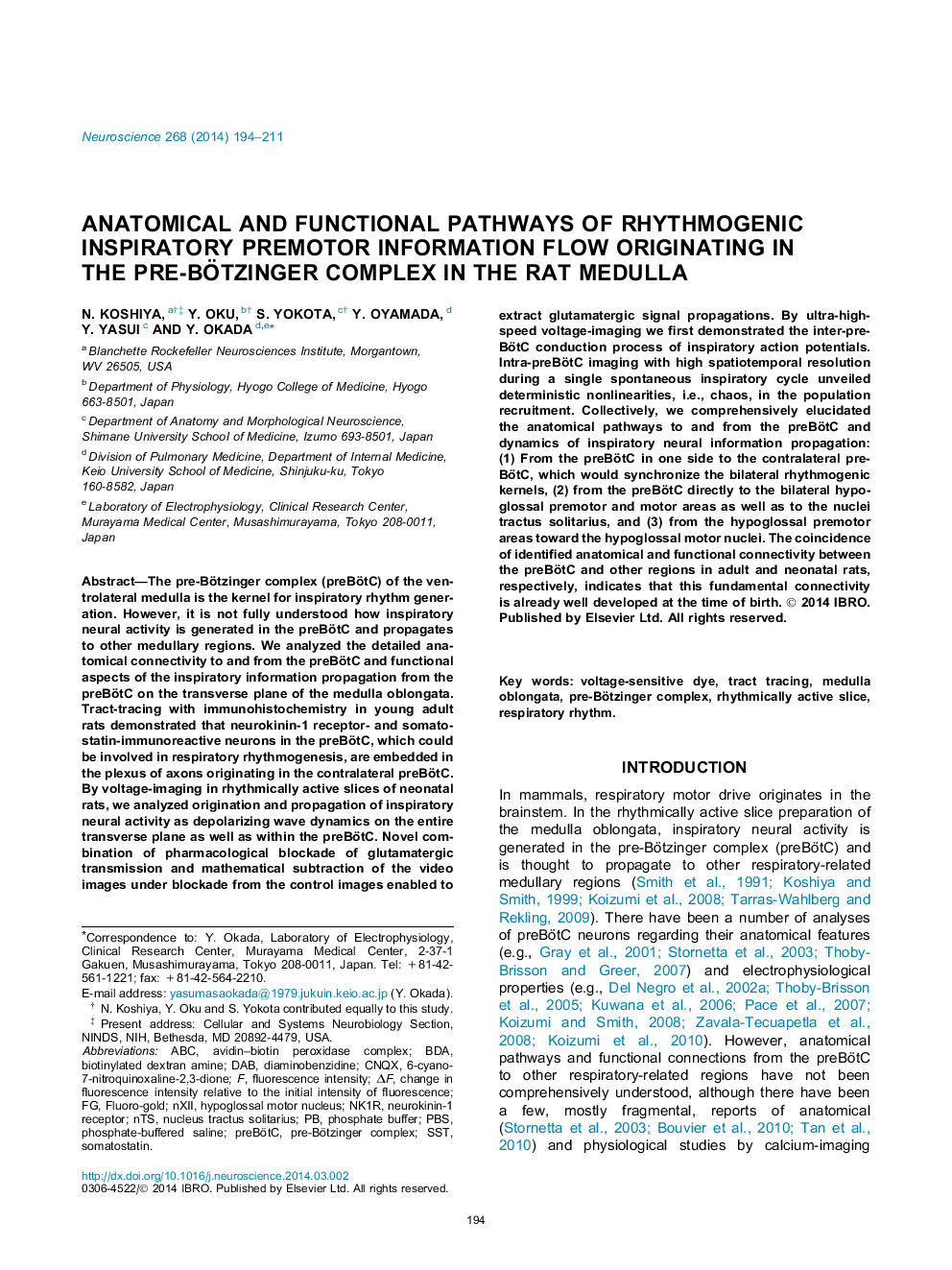| Article ID | Journal | Published Year | Pages | File Type |
|---|---|---|---|---|
| 4337716 | Neuroscience | 2014 | 18 Pages |
•Coupling between the bilateral pre-Bötzinger complex (preBötC) regions was analyzed.•PreBötC neurons directly project to the hypoglossal premotor and motor areas.•Inter-preBötC glutamatergic action potential propagation was visually demonstrated.•Population recruitment in a single inspiratory cycle in the preBötC is chaotic.•Pathways from the preBötC to other medullary regions are well functioning at birth.
The pre-Bötzinger complex (preBötC) of the ventrolateral medulla is the kernel for inspiratory rhythm generation. However, it is not fully understood how inspiratory neural activity is generated in the preBötC and propagates to other medullary regions. We analyzed the detailed anatomical connectivity to and from the preBötC and functional aspects of the inspiratory information propagation from the preBötC on the transverse plane of the medulla oblongata. Tract-tracing with immunohistochemistry in young adult rats demonstrated that neurokinin-1 receptor- and somatostatin-immunoreactive neurons in the preBötC, which could be involved in respiratory rhythmogenesis, are embedded in the plexus of axons originating in the contralateral preBötC. By voltage-imaging in rhythmically active slices of neonatal rats, we analyzed origination and propagation of inspiratory neural activity as depolarizing wave dynamics on the entire transverse plane as well as within the preBötC. Novel combination of pharmacological blockade of glutamatergic transmission and mathematical subtraction of the video images under blockade from the control images enabled to extract glutamatergic signal propagations. By ultra-high-speed voltage-imaging we first demonstrated the inter-preBötC conduction process of inspiratory action potentials. Intra-preBötC imaging with high spatiotemporal resolution during a single spontaneous inspiratory cycle unveiled deterministic nonlinearities, i.e., chaos, in the population recruitment. Collectively, we comprehensively elucidated the anatomical pathways to and from the preBötC and dynamics of inspiratory neural information propagation: (1) From the preBötC in one side to the contralateral preBötC, which would synchronize the bilateral rhythmogenic kernels, (2) from the preBötC directly to the bilateral hypoglossal premotor and motor areas as well as to the nuclei tractus solitarius, and (3) from the hypoglossal premotor areas toward the hypoglossal motor nuclei. The coincidence of identified anatomical and functional connectivity between the preBötC and other regions in adult and neonatal rats, respectively, indicates that this fundamental connectivity is already well developed at the time of birth.
Graphical abstractFigure optionsDownload full-size imageDownload high-quality image (290 K)Download as PowerPoint slide
